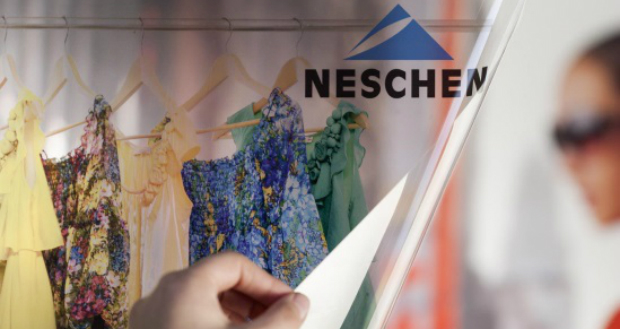
Consumables, inks and machinery have vastly improved in technology yet have become more affordable.
On top of that, the entry point into digital printing has lowered, both from a cost and a skill perspective and from more people entering the market.
Today, sign and digital print companies have a very different profile to years gone by. Facing a much more costly investment in equipment, for example printers as opposed to sign cutters and brushes, companies need to generate more income to service their investments.
These changes have created a highly competitive market where prices for self-adhesive graphics can easily be driven down as businesses compete to win contracts and remain profitable, or simply remain in business.
Everyone understands that in tough economic times and in a competitive market, businesses want to save money.
Making sound and prudent, financial decisions usually mean the difference between running a successful profitable business or trying to cope in business with low margins and a red ledger. In this environment, cost efficiencies become a significant factor in the decisions we make.
However, simply slashing and cutting costs without regard to their importance will have a detrimental effect on how a company performs financially.
Businesses need to consider where to make savings and how these savings may impact on the overall business.
Saving on film
Selecting the right film forms one of the most critical steps in any installation.
This can often be the first area where costs are reviewed. When using self–adhesive vinyl it is important to remember that the film is the foundation of the job. Build something on a weak foundation and you risk compromising the integrity of what you want to build.
When you look at a vehicle wrap, or a more technically challenging installation, the film only makes up a small part of the overall cost. If it fails, then the impact on cost is far greater than the cost of the film in the first place.
If you examine the fine print in warranty documents, you might be surprised to discover that in some cases you are only covered for the cost of the film and then only if the film is faulty. If the wrong film or a film that cannot handle the demands of the installation was chosen, then the outlay to repair the problem will rest solely on the convertor.
Of course, buying a cheap film will not necessarily result in failure. Some cheap films work just fine for some applications. What you to consider is why the film is cheap in the first place? While a film may initially cost less per square metre then another film it could, once the job is completed, actually end up being more expensive. What if the film takes longer to convert or apply? Printability, handling, application, ease of cutting and weeding and removability all impact on the price of a job and so the initial cost of the film is not the only indicator of value or expense.
In digital printing, we often find it quite difficult to show the value between two films. The two films may look the same; they may print the same; and they may even apply the same, but performance in field over time can prove totally different.
Customers don’t always complain and they do not always come back.
Clients don’t always act on failures that happen prematurely and we know a number of reasons for that. For one, they can assume these are simply the limitations of self-adhesive. Then we lose future opportunities to provide services to this client, and to people the client communicates with.
A good example of this happened with the installation inside lifts at an entertainment venue. One of the key requirements of the job was easy removability after the promotional campaign. The supplier recommended a film with this in mind but the printer opted for what they thought was a more cost effective alternative. The cheaper material printed applied and performed as expected but when it came to removing the graphics, it proved difficult. The lifts had to be shut down in order for the time consuming task of film and adhesive removal which was a significant inconvenience in a venue that was open 24/7.
Avoiding failure
Failing self-adhesive installations do not serve our industry well as end-users lose confidence in our technology. It also creates a seriously negative impression for other potential customers who see these failures.
Self-adhesive manufacturers face mounting pressure to produce cheaper films to satisfy customer expectations and also to compete successfully in a tight market. They can do it by reducing their margins and cost cutting; by creating more efficient production and processes; by using cheaper ingredients; and by shifting manufacturing to markets where labour is cheaper.
Some of these measures will impact on quality and consistency and others will not. Films in our industry are generally not judged on these considerations to determine the value of a product. Yes it is true that getting something cheap can mean getting something for less than it is worth. But equally, getting something that is an inferior product so often comes back to the standard case that, ‘You get what you pay for’.
We should also take particular care not to judge the value or quality of a film solely on names.
Cast, calendered polymeric and calendered monomeric, are names that are frequently used to categorise films and provide indicators of quality, performance and price but that is all they are, indicators.
While these names explain the manufacturing process that the makers used to produce the top sheet and what kind of plasticiser they used to make the top sheet more pliable, they do not necessarily reflect the quality of all the ingredients used; the expertise of the manufacturer in producing the film; the adhesive quality; the performance; or the backing paper.
All of these components can add value to the product or they can be the downfall of the product. All cast products are not created equal and a polymeric film may not be better to use overall than a monomeric simply because it contains a polymeric plasticiser.
Similarly, two films with identical top sheets may offer different performance levels based on the adhesive quality. Durability, adhesion and shrinkage are also influenced by the adhesive.
Staying competitive
I have heard many times customers saying that they would like to use a higher quality film but that they need to be competitive in the market.
In order to move the focus away from price orientated decisions we need to sell value. Value is not reflective of price; it is the return on investment.
If you are paying less for one film versus another, you are only getting value if all the ingredients and the performance aspects are the same. Otherwise, what looks cost effective on paper is actually an expensive purchase in the long run.
We need to take time and understand the importance of evaluating why a product may cost less, what has been sacrificed in order to make it so, and how this will impact on the job.
To make a product cheaper than similar products in the same category means that somewhere in the manufacturing or supply chain something has to be given away by someone in order to make a price saving.
Someone always has to pay for cheap, and you want to make sure that it is not your business. As the old saying goes stingy pays twice, and that is a loss.
Comment below to have your say on this story.
If you have a news story or tip-off, get in touch at editorial@sprinter.com.au.
Sign up to the Sprinter newsletter

